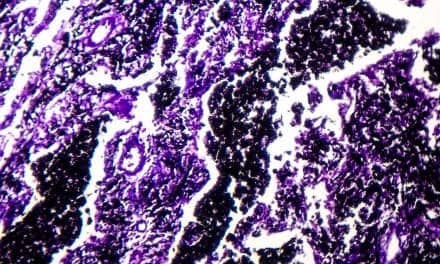Reducing outdoor concentrations of two air pollutants, ozone (O3) and fine particulate matter (PM2.5), to levels below those set by the US EPA would likely save thousands of lives each year, result in far fewer serious illnesses and dramatically reduce missed days of school and work, according to a new analysis conducted by the American Thoracic Society (ATS) and the Marron Institute of Urban Management at New York University.
In new research published online in the August edition of Annals of the American Thoracic Society, researchers found that meeting a 0.060 parts per million (ppm) 8-hour standard for O3, rather than the EPA’s 0.070 ppm standard, and an 11 micrograms per cubic meter (µg/m3) annual standard for PM2.5, rather than the EPA’s 12 µg/m3 standard, would each year:
- Save 9,320 lives;
- Reduce serious health events (morbidities), such as heart attacks, hospital admissions and emergency room visits, by 21,400; and
- Decrease “adverse impact days,” during which people may not be able to work, go to school or otherwise be physically active because of severe breathing problems, by 19,300,000 days.
The ATS recommended standards for O3 and PM2.5 are based on scores of national and international epidemiological, animal and human exposure studies.
“While there is information available about counties in the United States that exceed EPA air pollution standards, there has not been a similar source of information about how that air pollution actually affects the health of people living in those areas,” said lead study author Kevin Cromar, PhD, director of the Air Quality Program at the Marron Institute of Urban Management and assistant professor of population health and environmental medicine at the NYU School of Medicine.
The EPA sets standards for six principal air pollutants to meet its obligation under the Clean Air Act to protect the health of the American public, including vulnerable populations, by an adequate margin of safety. In addition to ozone and particulate matter, the other pollutants are lead, carbon monoxide, nitrogen dioxide and sulfur dioxide.
Dr. Cromar said that most studies have looked at only one air pollutant. By including the two most important air pollutants in the analysis, the new study “gives policy makers and local air quality managers a much better picture of what is going on.” Overall, the study found that the more protective O3 standard accounted for about 75 percent of the estimated health benefits due to a greater number of metropolitan areas with O3 concentrations above the ATS recommendations.
The researchers used the same software that the EPA uses to conduct regulatory cost-benefit analysis to estimate the health benefits of more protective standards for O3 and PM2.5. Data inputted into the program came from census tract information, 19 large national or multi-city studies that assessed the health impacts of the two pollutants, and a network of air monitors that the EPA relies upon to determine if states and counties are meeting air quality.
The authors emphasized that their findings do not specifically address an individual’s health risk or the personal benefits of cleaner air, but rather assess population level health impacts. Metropolitan areas with the large populations and elevated concentrations of one or both air pollutants, they wrote, would realize the biggest improvements in public health by meeting the more protective standards.
The ten metropolitan areas that would benefit the most from more protective O3 and PM2.5 standards are:
- Los Angeles (Long Beach-Glendale), CA: 1,341 lives saved, 3,255 fewer morbidities and 2,892,029 fewer impacted days
- Riverside (San Bernardino-Ontario), CA: 808 lives saved, 1,416 fewer morbidities and 1,321,762 fewer impacted days
- New York City (Jersey City-White Plains), NY-NJ: 282 lives saved, 977 fewer morbidities and 818,666 fewer impacted days
- Phoenix (Mesa-Scottsdale), AZ: 283 lives saved, 598 fewer morbidities and 636,730 fewer impacted days
- Pittsburgh, PA: 285 lives saved, 533 fewer morbidities and 281,858 fewer impacted days
- Fresno, CA: 260 lives saved, 672 fewer morbidities and 390,551 fewer impacted days
- Bakersfield, CA: 241 lives saved, 333 fewer morbidities and 220,722 fewer impacted days
- Houston: (The Woodlands-Sugar Land), TX: 229 lives saved, 661 fewer morbidities and 636, 211 fewer impacted days
- Cleveland (Elyria), OH: 196 lives saved, 487 fewer morbidities and 231,859 fewer impacted days
- Cincinnati, OH-KY-IN: 173 lives saved, 298 fewer morbidities and 192,989 fewer impacted days
The ATS and Marron Institute expect to update the report annually. The report and an online tool with searchable information can be found at www.HealthoftheAir.org. The online tool includes information about whether a metropolitan area meets EPA and ATS-recommended standards for each of the two pollutants and estimates the health benefits, for each pollutant, of meeting ATS recommended standards.
“As an organization of health care providers and researchers, we know firsthand the toll air pollution takes on people’s health, particularly the young and elderly,” said ATS President David Gozal, MD, MBA, Herbert T. Abelson professor of Pediatrics at the University of Chicago. “This report begins to quantify that toll and provides information that, we believe, should inform the setting of national air pollution standards.”
He added, “Equally important, state and local policy makers can use the online tool to better understand the nature of their air pollution problem so they can consider the best solutions for addressing their particular problem and improving the public’s health.”
Financial support for this project was provided by the Marron Institute of Urban Management at New York University and the Turner Foundation.









